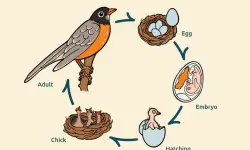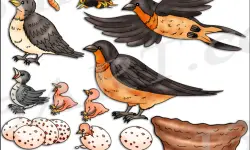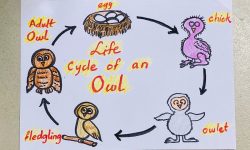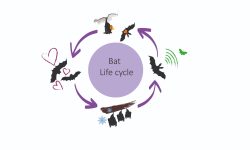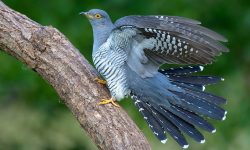Among the vast, sunburnt landscapes of Australia, a tall and majestic bird roams the open grasslands with stately grace. The Australian Bustard (Ardeotis australis), also known as the plains turkey or bush turkey, holds a unique position in the continent’s birdlife—it is the only bustard species found in Australia. With its impressive size, striking posture, and distinctive behaviors, this bird stands as a living relic of the open outback, often unseen but deeply significant to Australia’s natural heritage.
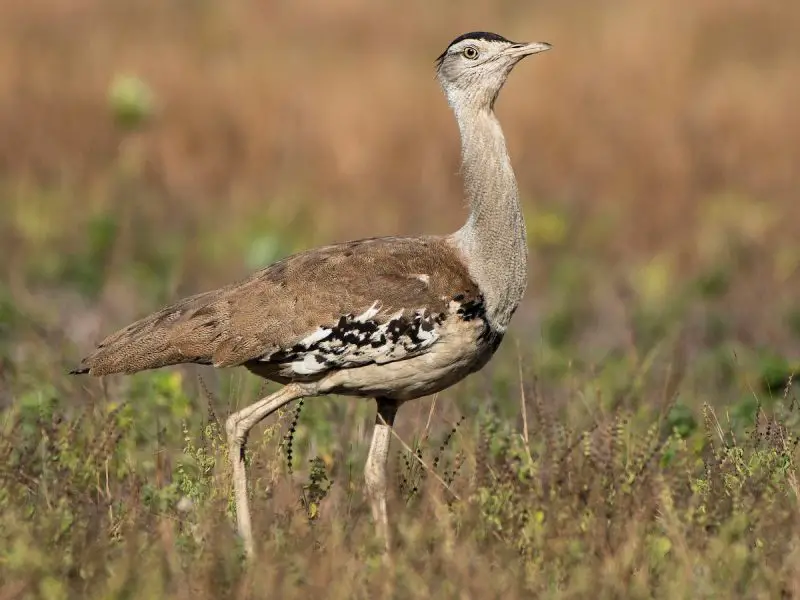
The Bustard Family: A Global Perspective
The Giants of the Grasslands
Across the sun-scorched savannas of Africa, the vast steppes of Asia, and the open fields of Europe, a group of birds known as bustards quietly commands attention. These are not your typical flyers—they are heavy-bodied, long-legged, ground-loving giants, some of the largest flying birds on Earth. With robust legs built for distance, elongated necks, and feather patterns that blend seamlessly with dry vegetation, bustards are masters of camouflage and endurance.
Though capable of flight, bustards typically prefer to walk, covering vast tracts of land in search of food. Their terrestrial lifestyle is a testament to evolutionary fine-tuning—enabling them to thrive in some of the world’s most arid and open habitats, where evading predators and finding scattered resources requires both stealth and stamina.
A Lone Bustard in the Land Down Under
Globally, there are more than 25 species of bustards, spread across three continents. But in Australia, only one has claimed a stake in the landscape: the Australian Bustard (Ardeotis australis). It is the continent’s sole representative of this extraordinary family—a relic of ancient migrations and isolated adaptation.
Belonging to the genus Ardeotis, the Australian Bustard shares its lineage with other famed giants like Africa’s Kori Bustard and India’s critically endangered Great Indian Bustard. Yet unlike its cousins, Ardeotis australis has evolved to survive the uniquely harsh, dry interior of Australia, where shimmering heatwaves dance over red soil and grasslands stretch toward a distant horizon.
This bustard has become more than just a species—it is a symbol of the resilience and wild spirit of the Australian outback. With its solitary presence on the continent, it stands not only as a biological outlier but as a living connection between Australia and the global family of bustards, adapted in its own remarkable way to the wide, sunlit silence of the bush.
Physical Description of the Australian Bustard
A Towering Figure of the Outback
With its commanding presence and long-legged stride, the Australian Bustard ranks among the largest flying birds on the continent. A full-grown male can stand up to 1.2 meters (4 feet) tall and weigh anywhere between 4.5 to 14 kilograms (10 to 31 pounds)—a weight class that puts it firmly among the heavyweights of avian flight. Females are more lightly built, often weighing half as much as males, but they are still imposing when compared to most of Australia’s birdlife.
Camouflaged in Earth Tones
The Australian Bustard wears the colors of the outback—its mottled brown and white plumage mirrors the hues of dry grasslands and dusty soil, providing near-perfect camouflage against predators and human observers alike. The neck and underbelly are pale white, marked with distinct dark vertical bars that run down the chest and flanks.
The head is subtly crested, lending it an alert and regal appearance, while its sharp yellow eyes scan the horizon with piercing intensity. In flight, the bustard becomes even more spectacular, unfurling broad, rounded wings marked with dramatic black-and-white banding—a striking contrast to its otherwise earthy tones. Despite its bulk, it lifts into the air with surprising grace, gliding on slow, deep wingbeats across vast open spaces.
Habitat and Distribution
Where Do Australian Bustards Live?
The Australian Bustard roams across much of mainland Australia, favoring the vast, sun-drenched expanses of the arid and semi-arid interior. Though once widespread, their presence is now most strongly felt in northern Australia, particularly in regions of the Northern Territory, Queensland, and Western Australia. Scattered populations still persist further south, especially in open inland habitats, though they have declined in areas where intensive agriculture and development have fragmented the landscape.
Their distribution reflects their adaptability, as long as open ground is available. From red desert plains to tropical savannas, this species has evolved to move with the seasons and conditions, often appearing suddenly after rains transform dry ground into a temporary oasis.
Preferred Habitats
Australian Bustards are creatures of open country. They prefer wide, uncluttered environments where they can walk freely and maintain a clear view of their surroundings. Ideal habitats include native grasslands, lightly wooded plains, and savannas, where scattered shrubs and low trees provide occasional cover without obstructing their field of vision.
Interestingly, they also frequent agricultural lands, especially croplands and grazing fields, where food is abundant and vegetation is low. Their ability to blend seamlessly into dry, grassy backdrops, coupled with their nomadic movements, allows them to navigate some of the most harsh and unpredictable terrains on the continent.
Dense forests and heavily urbanized zones, on the other hand, are generally avoided. These environments limit the bustard’s visibility and mobility, which are essential for detecting predators and foraging effectively. Instead, this bird thrives in the wide-open silence of Australia’s wild heart, where the land seems to stretch endlessly beneath the heat-shimmering sky.
Behavior and Lifestyle
Terrestrial but Capable Flyers
Despite their formidable size and heavy build, Australian Bustards are skilled fliers. When they take to the air, their broad wings and strong wingbeats carry them surprisingly far. However, flight is not their preferred mode of travel. These birds are fundamentally terrestrial, spending most of their time walking steadily across open landscapes in search of food. Their gait is slow, deliberate, and upright—giving them an almost statuesque presence against the Australian horizon.
When threatened or startled, a bustard may suddenly launch into a short, low flight to escape danger, using its powerful wings to rise above the grasses before gliding down to safety. But more often, it relies on its ability to remain still and invisible, trusting its earth-toned plumage to blend into the background rather than fleeing at the first sign of disturbance.
Diet and Foraging Habits
The Australian Bustard is a true omnivore, equipped to handle a diverse and opportunistic diet. Its foraging style is methodical: the bird walks with purpose, pausing frequently to scan the ground and peck at potential prey. Insects form a major part of its diet, particularly grasshoppers, beetles, and caterpillars, which are abundant in the warm, dry months. Small reptiles, such as skinks and geckos, are also consumed when available.
But the bustard’s diet is not strictly carnivorous. It also consumes a wide variety of plant matter, including seeds, wild fruits, blossoms, and tender green shoots. This dietary flexibility helps it survive in Australia’s unpredictable climate, where food sources can vary dramatically from season to season and region to region. Occasionally, bustards have even been observed preying on small mammals or fledgling birds, underscoring their opportunistic feeding behavior.
Bustards typically feed alone or in small, loosely associated groups, rarely forming tight flocks. Their solitary tendencies, slow movements, and exceptional camouflage make them easy to overlook—even in open terrain. Yet those with a keen eye may spot one calmly foraging in the distance, a quiet but commanding figure striding through the Australian wilderness.
Mating and Reproduction
Courtship Display
When the dry season begins to give way to occasional rains, the Australian Bustard’s breeding season comes to life on the sunbaked plains. During this time, the otherwise solitary male transforms into a performer of remarkable flair, engaging in one of the most striking courtship displays in the Australian bird world.
To attract a mate, the male bustard inflates a large gular sac—a balloon-like pouch at the base of his neck—which expands dramatically, lifting the surrounding feathers into a snowy white, downy ruff. With his chest puffed out and body stiffened, he begins to strut in slow, deliberate circles, emitting deep, resonant booming calls that can carry over vast distances in the still desert air. These displays are not just for courtship; they also signal dominance to rival males, reinforcing his claim over territory and mating rights. When several males gather in open spaces to compete for female attention, the scene takes on the quality of an ancient ritual—a booming ground where the strongest display earns the highest reward.
Nesting and Chick Development
Once mating is complete, the female takes full charge of reproduction and parenting. She selects a discreet spot in open country—often a bare patch of earth or a shallow scrape—to lay her eggs. There is little to no nesting material used; instead, the location relies on its camouflage and isolation to protect the clutch. Typically, she lays one or two eggs, pale and speckled to match the surrounding soil.
The female alone incubates the eggs, a process that takes several weeks. She sits motionless for hours, relying on her cryptic coloring to remain hidden from predators. Once the eggs hatch, the chick emerges not helpless but precocial—eyes open, body covered in down, and ready to walk within hours. It follows its mother closely from the very beginning, learning to forage in the grasslands while staying alert to danger.
Mother and chick maintain a low profile in the open terrain, moving cautiously and feeding in silence. This early independence is crucial in a world where shade is rare and threats come swiftly. By the time the chick can fly, it has already mastered the habits of survival on foot—stealth, patience, and the endless rhythm of walking through grass and dust.
Cultural and Ecological Significance
Indigenous Knowledge and Connection
To many Aboriginal communities across Australia, the Australian Bustard is far more than just a bird of the grasslands—it is a creature of cultural depth and ancestral memory. Known by various names in Indigenous languages and often depicted in Dreamtime stories, the bustard holds symbolic meaning tied to land, survival, and the seasons. Its behaviors, movements, and appearance serve as ecological cues, helping traditional custodians understand environmental changes and the timing of important events such as bush food availability or the coming of rain.
Historically, the bustard was also a valued food source, particularly in regions where its abundance made it an accessible form of protein. Skilled hunters could spot and approach the bird with care, taking only what was needed and passing on respectful practices through generations. Today, while the species is legally protected in most Australian states, it remains a living thread in the fabric of Indigenous ecological knowledge, and its presence in the landscape continues to inspire art, storytelling, and ceremony.
Role in the Ecosystem
Ecologically, the Australian Bustard plays a crucial role in maintaining the balance of open-country ecosystems. As a top-level ground forager, it helps regulate populations of insects and small vertebrates, feeding on everything from grasshoppers and beetles to lizards and rodents. This dietary versatility allows the bustard to act as a natural form of pest control, especially in agricultural regions where invertebrate outbreaks can threaten crops.
But the bustard is not just a predator—it is also prey, particularly for large birds of prey such as eagles and introduced mammals like red foxes and feral cats. Bustard eggs and chicks are vulnerable to ground-based predators, while adults may fall to aerial hunters. In this way, the bustard functions as a link between trophic levels, helping to transfer energy through the food web and supporting a wide array of native species.
Through its foraging patterns, nesting behavior, and movement across vast territories, the bustard contributes to seed dispersal and invertebrate population dynamics, shaping the very structure of Australia’s open landscapes. Its decline in some areas serves as a signal of broader ecological imbalance, making it not only a species of cultural importance but also an indicator of ecosystem health.
Conservation Status and Threats
Legal Protection
The Australian Bustard is currently protected under wildlife legislation in most Australian states and territories, reflecting its ecological importance and declining numbers in some parts of its range. However, protection varies across jurisdictions, and enforcement can be inconsistent in remote areas where the bird is most often encountered. While not listed as globally threatened, the bustard’s status is considered of conservation concern, especially in the southern and eastern parts of Australia, where populations have experienced significant declines over the last century.
In regions like the Northern Territory and northern Western Australia, the species remains relatively stable, largely due to the availability of intact habitat. In contrast, states such as Victoria and New South Wales have witnessed sharp reductions in bustard sightings, with local extinctions likely in several areas due to a combination of habitat loss and unregulated pressures.
Main Threats
One of the greatest threats to the Australian Bustard is habitat destruction, particularly from land clearing for agriculture, mining, and urban development. The bustard’s reliance on open landscapes makes it highly sensitive to fragmentation, as roads, fences, and altered vegetation reduce its foraging areas and increase its exposure to danger. Once-vast grasslands have been transformed into cropland or heavily grazed pastures, displacing bustards and limiting their ability to move safely through the landscape.
Vehicle collisions pose another serious risk. The bustard’s slow gait and tendency to cross open roads, especially in remote regions, make it vulnerable to traffic—particularly at dawn and dusk when visibility is low. Many fatalities go unreported in these sparsely populated areas.
In addition, introduced predators such as red foxes and feral cats present a constant threat to bustard eggs and chicks, which are laid in shallow ground scrapes with little protection. These invasive species have devastated the ground-nesting bird populations across Australia, and the bustard is no exception.
Finally, despite its legal protection, the bustard still falls victim to illegal hunting in some regions, either for food or sport. While such cases are relatively rare today, they can have a disproportionate impact on local populations, especially when adult females or breeding pairs are targeted.
Altogether, these threats contribute to a fragmented and uneven population trend, where the bustard remains common in some regions but is disappearing from others. Without sustained conservation efforts and greater public awareness, this iconic bird of the outback could silently vanish from much of its historical range.
Bustards in Modern Australia
Observing Bustards in the Wild
Spotting an Australian Bustard in the wild is often a matter of patience, timing, and luck. Though these birds can be incredibly elusive, their tall, upright posture and deliberate movements make them surprisingly noticeable once detected. The best time to encounter them is during the dry season in northern Australia, when vegetation is low and the birds are more active in open spaces.
Birdwatchers and nature photographers often scan outback roadsides, national parks, and cattle station pastures, where bustards stride across the landscape like ancient sentinels of the bush. Their cautious behavior means they rarely allow close approach, but from a distance, one might see a lone male walking slowly through sun-bleached grass or pausing to scan the horizon with sharp, yellow eyes. In some regions, bustards are a highlight for eco-tourism, drawing visitors eager to witness this rare blend of elegance and wildness.
Adaptation to Agricultural Landscapes
While many native species struggle with the spread of agriculture, the Australian Bustard has shown remarkable adaptability. In certain regions, especially in the north and interior, bustards have learned to exploit croplands, fallow fields, and irrigated pastures, where grains, insects, and plant shoots provide a steady food supply.
This shift into human-modified landscapes demonstrates the species’ resilience and ecological flexibility, but it also brings new challenges. As bustards forage among crops, they may be perceived as pests by some farmers, and their presence near roads or equipment increases the risk of collisions or disturbance. Moreover, breeding in or near agricultural land exposes their nests to heightened predation by feral animals and domestic pets.
Nonetheless, the bustard’s ability to navigate both wild and altered environments is a testament to its ancient survival instincts. It walks a fragile line between traditional outback life and the encroaching modern world, remaining one of Australia’s most quietly enduring birds—even as its surroundings continue to change.
Conclusion
The Australian Bustard is more than just a large bird—it is a symbol of the Australian outback, a living witness to the continent’s ancient grasslands and open woodlands. As Australia’s sole representative of the bustard family, it occupies a unique ecological and cultural niche. Understanding and protecting this remarkable species ensures that future generations will continue to see the unmistakable silhouette of this plains-walking giant crossing the horizon.

